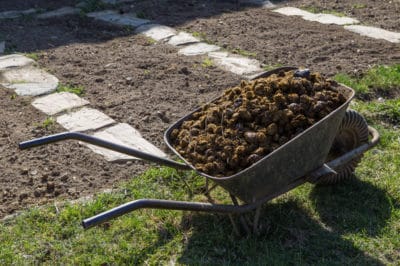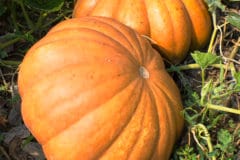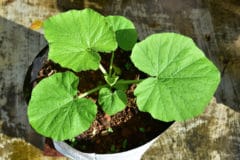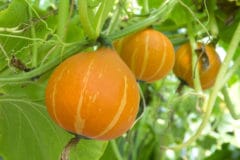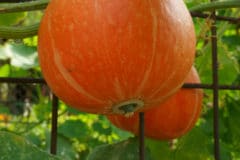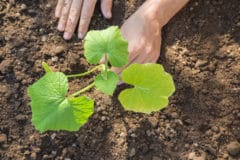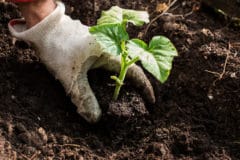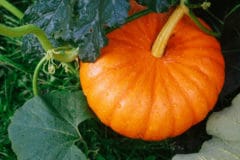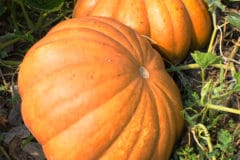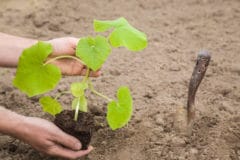What Do Pumpkins Need to Grow?
Just like all plants, pumpkins need specific things to grow into producing vines. Plenty of sunshine, well-spaced rows or hills, and adequate water are the necessities for having a thriving pumpkin plant.
Additionally, having a long enough growing season is important, as is the right kind of soil. Although pumpkins are forgiving vegetables that will grow in almost any type of soil, there are steps you need to take to supply any element they are lacking. For example, soil with a clay-like consistency benefits from the addition of sand. Knowing the type of soil you have can increase your success.
Types of Fertilizer for Pumpkins
One of the most important things to consider when growing pumpkins is what kind of fertilizer is best. It is also important to know when to apply the fertilizer. Fast growing need nutrition to grow, and the yellow or orange vegetables need plenty of fertilizer to form into giant pumpkins.
The Best Kind of Fertilizer
Pumpkins need a combination of nitrogen, potassium, and phosphate to thrive. The correct fertilizer has a 5-10-5 ratio of those three elements. Since over-fertilizing can lead to just as many problems as under-fertilizing, it is important to apply the right amounts of each one. As a general rule, the amount of fertilizer is approximately 1.5 lbs (.68 kg) per acre. Most farm and garden stores or nurseries carry pre-mixed fertilizer with the correct ratio of each nutrient.
Organic Fertilizer Options
Organic fertilizers work equally well and are important if you are committed to growing pumpkins without man-made chemicals. Steer manure and organic compost both improve the soil and supply nitrogen, while a thin layer of wood ash will supply plenty of potassium.
Grass clippings layered around the plants will provide much-needed phosphorus as well as serve as a good weed barrier. Alternatively, you can purchase an organic fertilizer with the correct ratios and apply as directed on the packaging.
How Much is Too Much?
When it comes to over-applying fertilizer, the signs are relatively clear. There are several ways to tell if you have used too much.
- Leaves turn yellow and start to drop.
- Pumpkin flowers wilt and turn brown.
- Leaves get brown around the edges or at the tip.
- Plants have stunted or no growth.
- Seedlings or small plants die.
Be aware that under-fertilizing can cause similar issues. However, if you have applied fertilizer before the problems appear, you can safely assume that under-fertilization is not the issue.
Tip: After every application of fertilizer, either organic or man-made, be sure to water the plants well. This allows the plants to absorb the nutrients and also distributes the fertilizer more evenly. It is difficult to over-fertilize if you water the plants copiously after the fertilizer is applied.
When to Apply Fertilizer on Pumpkins
The best bet for making sure your pumpkin plants have the nutrients they need to grow properly, it is best to use the fertilizer approximately every three weeks during the growing season.
As long as you remember that plants need food to reach their potential for health and size, you should have a bumper pumpkin crop at the end of the growing season.
